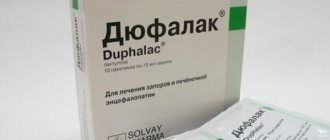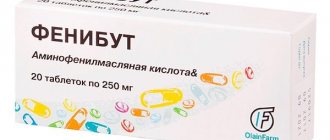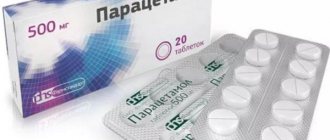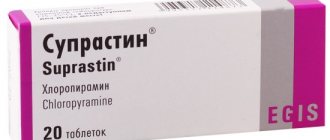During lactation, a young mother may encounter various diseases, including those that she has never encountered before. This may require the use of medications, the possibility of use of which is controversial. Thus, the use of Diclofenac during breastfeeding will be justified in eliminating the inflammatory process in the joints, arthrosis, neuralgia, and swelling after surgery. The drug is prescribed by a doctor; self-medication by a nursing mother is prohibited.
Study of the characteristics of Diclofenac
During breastfeeding, Diclofenac is excreted into breast milk. But to what extent and how dangerous it is for the child there is no publicly available unique information. Review articles do not cite specific studies. According to British doctors, some statistics were obtained on the penetration of the drug into breast milk:
- 6 women were given Diclofenac at a dose of 50 mg. After 6 hours, its volume is less than 100 µg/l in milk.
- 6 mothers received Diclofenac tablets 100 mg per day 7 days after birth. 59 samples of expressed milk (the number of samples taken is not available) did not detect the drug.
- taking 150 mg of the drug per day turned out to be in milk in a volume of 100 µg/l, for a baby this is approximately 0.03 mg/kg per day.
- 30 mothers used about 56 mg of suppositories of the drug on the day of birth and 33 mg the next day. This did not affect breastfeeding.
- A mother who took Diclofenac (without indicating the dose) after childbirth, while breastfeeding, developed urticaria in her newborn on the 15th day. Although, according to the authors of the study, this could be a provocation from the hepatitis B vaccination given to the baby on the 7th day of life.
Diclofenac in adjusted downward doses does not affect the composition of breast milk. If we add a short half-life and a small amount of glucuronide metabolite, then many reviewers are loyal to the use of Diclofenac during lactation.
Diclofenac has long earned the reputation of being the “gold standard” among non-steroids. Slava refers to the original product, which is manufactured by the pharmaceutical corporation Novartis International AG. because it is not only effective in curing a number of pathologies, but was also considered safe. But the emergence of generics, much lower in cost and, as a result, their low safety, had a negative impact on the reputation of the medicine.
Diclofenac during breastfeeding
21.05.2017
When breastfeeding, mommy monitors her health especially closely. But there are times when taking medications is simply necessary. Especially when it comes to lesions of the musculoskeletal system. For this purpose, experts most often prescribe Diclofenac. Can it be used while breastfeeding?
Characteristic
This drug is a strong anti-inflammatory, analgesic and antipyretic agent. It contains diclofenac sodium, alcohol, water. Available in the form of drops, gel, ointment, rectal suppositories and tablets.
The mechanism of action is to suppress the synthesis of prostaglandins, which are “provocateurs” of the appearance of temperature, pain, and inflammatory processes. The maximum concentration of active substances in the body is reached after three hours. The drug is absorbed into the blood and passes into breast milk in small concentrations.
When to use
The medicine is prescribed for short-term treatment of severe pain arising from the following pathologies:
- for degenerative diseases of the musculoskeletal system;
- with damage to peripheral nerves;
- lumbago;
- sciatica;
- migraines;
- gout
Diclofenac can be prescribed during breastfeeding in severe cases of ENT diseases. These include otitis media, laryngitis, pharyngitis.
Diclofenac injections during lactation are prescribed if necessary to obtain a quick therapeutic effect. Most often it is prescribed for acute pain in the postoperative period.
Tablets and injections are used for other types of pain. These include toothache. When using tablets, the drug remains in the body of a nursing mother longer, which increases the therapeutic effect for a longer time. The medicine should be injected only in cases where it is necessary to achieve rapid relief of the symptoms of the disease. Only a doctor can prescribe such therapy for nursing mothers.
Lactation and medicine
Diclofenac for hepatitis B is prescribed only by a doctor. At the moment, there is no accurate data on the ability of the drug to penetrate into mother's milk during breastfeeding. There have been no precise studies, and therefore only review articles provide data. For example, traces of diclofenac were not found in mother's milk within six hours after intramuscular administration of the drug at a dose of 50 mg.
Six breastfeeding mothers took 100 mg tablets daily for seven days. After research, the medicine was not found in milk. And when using the drug orally at a dosage of 150 mg per day, a small amount of the drug was detected. This amount is not capable of negatively affecting the health of an infant.
When not to use the medicine
Diclofenac is not allowed during breastfeeding if a woman has the following pathologies:
- hypersensitivity to the components of the drug;
- perforation of the walls of the digestive tract;
- gastrointestinal pathologies;
- heart, kidney and liver failure.
If possible side effects occur, the course of therapy is suspended.
It is allowed to combine the drug during breastfeeding with lithium preparations, diuretics, and acetylsalicylic acid. It is also compatible with cyclosporine, methotrexate, and antidiabetic drugs.
Combining medications should only be done when prescribed by doctors. You should not use different medications on your own. May harm a newborn baby.
Thus, Diclofenac can be used by women if the baby is on guardianship and is safe enough for the health of the baby. The use of the drug does not harm the baby. Before taking it, it is advisable to read reviews about the drug. Lactation consultants strongly recommend using this remedy after feeding your baby.
laktacia.ru
The value of Diclofenac
The non-steroidal anti-inflammatory drug Diclofenac has a wide spectrum in the treatment of pathologies due to:
- pain relief
- antipyretic effect
- anti-inflammatory action
An important detail in the variety of dosage forms, you can always choose the one that is most suitable:
The mechanism of action of the drug is the speed of penetration into the source of inflammation after entering the bloodstream. The pathologies that the drug treats are indicated in the instructions in the indications for use:
- joint pain
- rheumatism of various manifestations
- neuralgia
- ear, nose and throat pain, dental and other
Many women suffer from joint inflammation and neuralgia. This especially often happens after childbirth due to weakened immunity and postpartum hemorrhoids. On the one hand, there is pain, and on the other, you have to care for and feed the baby. In this case, you want to purchase an effective and not harmful remedy for lactation. Seeing a doctor will help you do this; you should not self-medicate.
Each dosage form has its own dosage during lactation:
- Diclofenac injections when breastfeeding a newborn are not contraindicated. Moreover, they are prescribed in a dosage of 1 ampoule per day, i.e. 1 ml for injection;
- It is safe to take 100 mg tablets per day. Appears in breast milk in small quantities, taking 150 mg of the drug. The dose within 200 mg should be discussed with the doctor. If the disease is mild, then the dose can be reduced to 75 mg;
- Diclofenac ointment for lactation or gel is considered safe for external use. They are applied to the painful area in a volume of 2-4 mg, rubbed in well with massage movements. The procedure can be repeated no more than 4 times a day. It is necessary to ensure that there is no damaged skin in the outbreak;
- When feeding a child, Diclofenac suppositories can be used in an adjusted dosage. Following British research, a dose of 1 50 mg suppository per day will not harm the baby. But it will have a quick pain-relieving effect. The suppository is inserted into the rectum before bedtime.
Is it possible to use Diclofenac while breastfeeding?
To maintain lactation for a long time, a woman needs to be attentive to her health. She is advised to eat right and use only approved medications for treatment. You can avoid a negative situation only if you consult your doctor before treatment. Diclofenac during breastfeeding has its own characteristics of use and prescriptions for this. Before using the drug, you must familiarize yourself with them.
Special properties of Diclofenac
This drug is a non-steroidal drug and is used to eliminate the inflammatory process. Diclofenac quickly and effectively eliminates pain and reduces overall body temperature.
For ease of use, the drug is available in several dosage forms:
- Pills can be used only after consulting your doctor. They are packaged in glass jars, which are recommended to be stored in a dark and cool place. In this case, it will be possible to maintain excellent properties for a long time.
- The injections are made using injection material containing a high content of diclofenac sodium. They also contain additional components that speed up the absorption process and provide a quick effect in relieving pain.
- The ointment has a characteristic odor and is used as an external pain reliever.
- For rectal administration, suppositories can be used. They have a characteristic white or cream color. It is advisable to use them only after consultation with your doctor.
You can continue breastfeeding while taking the drug
Indications for use of the drug
Diclofenac is recommended to be taken if there are negative symptoms of inflammation and pain. It does not contain steroids, but it helps to cope with a large number of diseases:
- inflammation of bones and joints;
- pain from rheumatism;
- elimination of inflammation of the nerves of the peripheral system;
- elimination of acute pain in the lumbar region;
- elimination of gout symptoms;
- rehabilitation after surgery.
When breastfeeding, a woman experiences a decrease in basic immune functions. Against this background, various inflammatory processes of the peripheral nervous system can develop. That is why during the postpartum period it is necessary to use additional painkillers.
When should Diclofenac not be taken?
Diclofenac is used for joint pain.
The drug should not be used in the following cases:
- presence of an allergy to one or more components;
- at the moment the woman has an acute runny nose;
- signs of urticaria can be seen on the skin;
- increased blood pressure;
- was previously diagnosed with bronchial asthma;
- the first three months of gestation;
- The child is not yet seven years old.
For nursing mothers, acute pain prevents them from concentrating on household chores and child care. The baby feels a change in mood and becomes capricious. Experts do not recommend enduring pain for a long time. Not in all cases massage will help get rid of this problem. With Diclofenac you can quickly eliminate inflammation and improve a woman’s overall well-being.
However, taking it can cause a number of side effects. Among them, nausea, vomiting, bowel dysfunction and excessive gas formation cause great trouble. Long-term use can lead to insomnia, allergies and increased blood pressure. Some patients develop a rash. If suppositories are used, then when inserting them, mommy may feel a slight burning sensation.
Before taking the drug, you must consult your doctor.
Use during lactation
Depending on the characteristics of the manifestation of the disease in the patient, the doctor determines the required dosage. For this purpose, the manufacturer offers Diclofenac in several forms. During use, their dosage and method are radically different.
There is also an approximate dosage regimen that is used to treat nursing mothers:
We recommend reading: Can a nursing mother take Suprastin?
- In tablet form, the drug can be taken in an amount of no more than 0.2 g per day. If the disease is mild, then the amount should be halved.
- When administered rectally, the volume should not exceed 0.15 g per day. Suppositories have a positive effect when used before bedtime. They are recommended to be administered in a supine position. In this case, maximum absorption of all components is ensured.
- For injection, a solution is used, the amount of which should not exceed 1 ml during the day.
- The patient is allowed to apply ointment in a volume of 2 to 4 mg to the skin.
This procedure is performed no more than three times a day. The maximum amount of the substance must be applied to the sore spot. Next, the drug is thoroughly rubbed in with the palm of your hand. After completing the procedure, it is recommended to wash your hands with soap.
The treatment regimen must be approved by the attending physician. Before doing this, mommy carefully studies the instructions contained in the package. Diclofenac does not pass into breast milk after digestion, so it is considered almost completely safe for the baby. The gel generally has a local effect. This is why a woman can continue breastfeeding. However, in any case, you should consult your doctor.
The drug quickly eliminates back pain
The drug should not be used if the woman or child has a number of contraindications. Additionally, it should be noted that the maximum amount of active components in the blood is recorded one hour after administration. The mother is advised to plan the course of treatment in advance so that feeding is not carried out during this time. Doctors also recommend drinking the medicine immediately after feeding.
On average, the treatment period is within a week. If necessary, you can replace this medicine with an analogue. Some doctors recommend stopping feeding while taking it. However, this point must be agreed with the attending physician without fail.
If the mother continues feeding, she is advised to constantly monitor the baby’s reaction to the drug. In case of an allergic rash, you should immediately consult your doctor. Each child has his own characteristics of the body, so no one can predict his reaction.
At your first appointment, you must be extremely careful and strictly follow the doctor’s instructions. If an allergic reaction occurs, it should appear within five hours after administration. If a negative effect is detected, then further treatment with the drug is not considered possible.
It is strictly forbidden to take the medicine without first consulting a doctor. Additionally, the patient must adhere to the treatment regimen. Only in this case will it be possible to get rid of negative symptoms without harming the formation of the baby’s internal organs.
mladeni.ru
Pregnancy and Diclofenac
During pregnancy, all forms of release of the drug Diclofenac are limited in use or are completely unacceptable . In such cases, the benefits and risks are weighed. The third trimester is especially dangerous. The use of the drug affects the contractile function of the uterus during childbirth. Penetrating through the placental barrier, the drug can provoke early closure of the ductus arteriosus in the newborn.
Even ointment and gel are harmful to the fetus . The medicine affects fertilization. Women who have difficulty conceiving should give it up. Therefore, pregnancy is more dependent on the side effects of Diclofenac than the condition of breast milk.
A good understanding of the situation with the use of Diclofenac, its dosage, the reaction of the child’s body, and the supervision of a doctor will allow you not to harm either yourself or the baby.
Sources:
Vidal : https://www.vidal.ru/drugs/diclofenak__11520 GRLS : https://grls.rosminzdrav.ru/Grls_View_v2.aspx?routingGu >
Found a mistake? Select it and press Ctrl + Enter
Publication date: 09/22/2019 |
During breastfeeding, a woman should watch what she consumes. This applies to food, drinks and medicines; the latter substances can negatively affect the health of mother and child.
You need to follow the rules for using the medicine, know the contraindications and the specific effects of the drug on the baby.
Pharmacological action and composition
Diclofenac is an anti-inflammatory drug belonging to the phenylacetic acid group. When consumed, platelet aggregation is inhibited. The medicine is used for the inflammatory process, reduces sensitivity with repeated administration of the substance.
Diclofenac eliminates painful manifestations, prevents stagnation of milk and mastitis. The drug has several forms with different concentrations of substances:
Tablets: round in shape, orange in color, contain lactose, starch, octadecanoic acid and other substances.
injections are concentrated in plasma after 10 minutes. By binding to proteins, the medicine ends up in the tissues of the body. The drug is eliminated from the body after 4 hours. The transparent liquid of Diclofenac contains caustic soda, sodium sulfite, and benzyl alcohol.
The medicine gets on the skin when applying a white ointment with a specific odor. The use of the drug reduces inflammatory swelling and reduces pain when moving. Reduces pain symptoms after injuries. The composition of the drug includes propanediol, a polymer of ethylene glycol.
For rectal use, white or cream-colored suppositories The medicine enters the blood plasma after 30 minutes. After initially passing through the liver, the drug is metabolized to enter the circulatory system.
Description of the product
Diclofenac is part of a group of non-steroidal drugs that are used to relieve pain and reduce body temperature. It is produced in several forms:
- orange tablets are available in blisters or jars and contain diclofenac sodium, lactose, sugar, starch, octadecanoic acid,
- liquid for injection is translucent in color, additionally contains sodium and sterile liquid,
- ointment or gel of a thick consistency, white or creamy with a slight specific aroma, additional components - lavender oil, carbopol,
- The candles are white with a beige tint; in addition to the main active ingredient diclofenac sodium, the composition contains solid fat.
The mechanism of action of the drug is based on inhibition of the biosynthesis of prostaglandins, which cause inflammation, pain, fever and body aches.
Among non-steroidal drugs, Diclofenac deserves primacy in the effectiveness and safety of its composition; it is manufactured by Novartis International AG.
Indications for use
A non-steroidal drug helps cope with symptoms of inflammation and pain. After childbirth, a woman needs to avoid diseases or protect herself well from them with the help of means that protect the vulnerable peripheral nervous system and joints. These areas suffer the most after childbirth.
Diclofenac is used as an antipyretic and analgesic medicine. Prescribed for the following ailments:
- damage and aches of joints;
- rheumatism (soft tissues, muscles);
- inflammatory edema in the postoperative period;
- destruction of the structural elements of the discs in the spine;
- motor disorders in peripheral nerves;
- lower back pain;
- destruction and wear of intra-articular cartilage;
- pain in the sciatic nerve with pressure from the lumbar vertebra down onto the buttocks;
- non-infectious conjunctivitis;
- chronic pain in the legs, lower back, arms with diffuse symmetry.
Contraindications and side effects
Pain syndrome can affect the lifestyle of a nursing mother: there will be no opportunity to care for and monitor the child. Women during lactation should be calm, otherwise the stressful state will be passed on to the baby.
Diclofenac has its side effects, which should be known to the patient:
- hypersensitivity;
- nasal mucus;
- first trimester of pregnancy;
- bronchial obstruction;
- high pressure;
- rash on the skin in the form of pink blisters from burns;
- local defect of the gastric mucosa;
- children under 6 years of age;
- sleep disturbance;
- urge to vomit;
- When applied rectally, a burning sensation is felt.
The drug is not recommended for use by women with heart problems, such as heart failure, impaired blood supply to the myocardium, or blockage of a blood vessel by a thrombus.
It is not recommended to use the drug for a long time, as the risk of side effects increases. If you feel unwell and find side effects, you should consult a specialist for advice.
Contraindications
Diclofenac in any dosage form is not used for diseases of the digestive tract, internal bleeding of the intestines, hemorrhoids, renal, liver and heart failure, diseases of peripheral arteries.
The drug should be used with great caution for bronchial asthma and allergic rhinitis. In case of overdose, the following side effects are possible:
- nausea, vomiting, change in stool, flatulence,
- headache,
- pressure surges,
- panic attacks, anxiety, sleep disturbances,
- allergic rashes on the body,
- burning sensation when administering suppositories.
If you have the symptoms described above, it is important to immediately stop taking the medication and consult a doctor for help.
Use of medication during lactation
When prescribing the drug, the doctor indicates the form (suppositories, tablets, ointment, injections). The suppository is inserted rectally in a horizontal position before bedtime - 0.15 gm per day. The ointment is applied three times a day, after rubbing in the palm of your hand - from 2 to 4 mg per application. 1 ampoule per day is injected intramuscularly.
These dosages are intended for breastfeeding women.
Effect on breast milk
Diclofenac is less dangerous than other drugs during breastfeeding. A small proportion of the drug is retained in milk. Suppositories and injections do not have a strong negative effect on the body, and ointment and gel are harmless, since they are applied locally and the action occurs locally.
Before prescribing the medicine, the doctor will ask about the woman’s illnesses; if there are no contraindications, you can use a non-steroidal drug. To protect the child, it is better to use the medicine after breastfeeding, since the maximum concentration of the substance in the blood plasma will occur within an hour. During treatment, lactation does not need to be stopped.
Effect on the child (infant or newborn)
Recommended use is no more than 7 days. If you feel discomfort or observe side effects in the mother or child, you should immediately consult a specialist. In addition to unpleasant sensations and ailments, an allergic reaction may occur, since the body’s sensitivity to foreign substances is individual. This is another reason to go to see a doctor.
Following the specialist’s instructions and performing the steps according to the scheme when taking the drug for the first time, you need to observe the sensations of the mother and child. If there are no negative reactions within 4 hours, you can continue the course of treatment. Self-medication is dangerous; treatment is carried out only according to a doctor’s prescription.
Features of the use of Diclofenac during lactation
When breastfeeding, women take responsibility for their own health. They are concerned about the effect of various substances on the body, and if everything is more or less clear with food, then with medicines the situation is different.
Sometimes a lactating woman simply has no other choice, and she takes the drug. Therefore, it is necessary to find out how the drug affects the newborn. Diclofenac - brief description, features of use during lactation. More on this later.
Composition and dosage form
Diclofenac is a non-steroidal anti-inflammatory drug that eliminates the inflammatory process, relieves pain and normalizes temperature.
Dosage forms of the drug:
- The tablets are orange, round, convex on both sides, packaged in blisters or glass jars. Ingredients: diclofenac sodium, lactose, sugar. Povidone, starch, octadecanoic acid.
- The injection liquid is clear or slightly yellowish with a slight aroma of phenylcarbinol. The main active ingredient is diclofenac sodium. Additional components: mannitol, E1520, phenylcarbinol, caustic soda. Sodium sulfite and sterile liquid are also included.
- Diclofenac ointment is white with a light characteristic aroma. Ingredients: diclofenac sodium, polyethylene glycol-400 and 1500, dimethyl sulfoxide, 1,2-propanediol.
- The gel is white with a yellow or cream tint and a light aroma. The main component is diclofenac sodium. Additional substances: rectified ethanol, propanediol, carbopol. E218, tritethanolamine, lavender oil, distilled water.
- Suppositories for rectal administration, white or cream color. Ingredients: diclofenac sodium, solid fat.
Indications
Diclofenac does not affect the development of the disease; the drug eliminates symptoms such as inflammation and severe pain.
A non-steroidal anti-inflammatory drug is prescribed for the following ailments:
- Arthritis;
- Osteoarthritis;
- Rheumatic diseases;
- Rheumatic lesions of soft tissues;
- Damage to peripheral nerves;
- Acute pain in the lumbar region;
- Lumbosacral radiculitis;
- Cervicobrachial syndromes;
- Acute gout;
- Fibromyalgia;
- Swelling and inflammation as a result of injury or surgery.
Lactating women often have weakened immunity, and therefore they often get sick. And ailments such as arthritis or peripheral nerve damage are common in the postpartum period.
Contraindications and side effects
Diclofenac has the following contraindications:
- individual intolerance to the components of the drug;
- peptic ulcer of the stomach or duodenum;
- coryza;
- nettle fever;
- high blood pressure;
- bronchial asthma;
- first trimester of pregnancy;
- children under 7 years old.
Sometimes acute pain makes it difficult to concentrate on everyday activities, spoils the mood, which the baby invariably feels and becomes capricious. You cannot tolerate such pain; if massage is ineffective, then use medications. With the help of Diclofenac, pain is reduced and the temperature is normalized.
Side effects are possible in the form of nausea, vomiting, defecation disorders, and increased gas formation. Sleep disorders, nervousness, high blood pressure, and allergic rashes also occur. When administering the drug in the form of suppositories, a slight burning sensation is possible.
If you notice such symptoms, temporarily stop using the medication and consult a doctor.
Features of use during lactation
The attending physician prescribes the drug, selects its most appropriate form, determines the dosage and frequency of administration. After all, Diclofenac is available in different forms, which are used in different ways, and the dosage is different.
An approximate treatment regimen using all dosage forms for nursing mothers:
- The drug in tablet form is taken in the following dosage - 0.15 g per 24 hours, but not more than 0.2 g. For mild forms of the disease, take 0.1 g of the drug per day.
- Rectal suppositories are used in the following dosage - 0.15 g per 24 hours. It is better to use before bedtime; in a horizontal position, the drug is better absorbed.
- The injection solution is prescribed in a dosage of 1 ml per day.
- The medication in the form of an ointment or gel is used in the following dosage - from 2 to 4 mg three times a day, the dose depends on the size of the painful area. Apply the drug to your palms and rub. Be sure to wash your hands after use.
This is informational information for nursing mothers; the doctor determines the treatment regimen for each individual case.
Diclofenac passes into mother's milk in small quantities and is therefore considered safe for the newborn. The drug in gel form does not pass into milk, as it acts locally. Therefore, there is no need to stop lactation during treatment, although everything is individual.
The drug is prohibited during breastfeeding if the mother and child have contraindications. The maximum concentration of the drug in the mother's blood occurs 60 minutes after administration. Plan your feeding schedule to avoid these periods. The best option is to take Diclofenac immediately after breastfeeding.
The course of treatment is 7 days. If therapy needs to be extended, then use similar drugs that are safe for infants. Some mothers stop breastfeeding during treatment. Do not take any action without your doctor's consent!
If you and your specialist decide to breastfeed your child at the time of treatment, then carefully monitor his condition, as an allergic reaction is possible. After all, it is unknown how the baby’s body will react to the medication. During the first appointment, you must be careful, strictly follow the schedule that your doctor has determined for you, and monitor your newborn. If there are no negative reactions within 3-5 hours, then you can continue treatment with Diclofenac.
Self-medication during breastfeeding is strictly prohibited! Do not deviate from the treatment regimen determined by the doctor. This is the only way to overcome the disease without harming the child.
vskormi.ru
In what cases is admission necessary?
Before you start taking medication during lactation, you should consult your doctor. It is not advisable to self-medicate. Diclofenac is an anti-inflammatory drug that has analgesic and antipyretic effects. This medicine is prescribed for the following health problems:
- joint inflammation;
- arthritis;
- arthrosis;
- diseases of the spine caused by inflammation and rheumatism;
- soft tissue rheumatism;
- neuralgia;
- lumbago;
- sciatica;
- cervical syndrome;
- gout in acute form;
- muscular rheumatism;
- swelling and inflammation after injuries and operations.
Unfortunately, nursing mothers can also get sick, because the body is very susceptible to diseases during the postpartum period due to low immunity and poor health. And such problems as neuralgia and joint inflammation occur quite often in many women.
It is worth paying attention to contraindications:
- sensitivity to the drug;
- stomach and duodenal ulcers;
- acute rhinitis;
- hives;
- high blood pressure;
- bronchial asthma;
- first 3 months of pregnancy.
Sometimes it is simply impossible to bear the pain, and this affects the emotional state of the mother and is passed on to the baby. Therefore, sometimes young mothers have to resort not only to massage, but also to medications. Diclofenac is effective and helps reduce pain and lower fever.
Dosage during lactation
The dosage of the drug is prescribed by the attending physician, taking into account the fact that the woman is breastfeeding. The dosage is different for each release form:
- It is recommended to start taking tablets at 100-150 mg per day. The maximum daily dose is no more than 200 mg. For mild cases of the disease, 75-100 mg is sufficient;
- candles. The initial dosage is 100-150 mg per day. Suppositories are prescribed mainly before bedtime;
- injections are prescribed in a dosage of 1 ampoule per day;
- ointment or gel is used depending on the size of the painful area, from 2 to 4 mg externally, 3-4 times a day, applied to the affected area and rubbed. After applying the ointment or gel, you must wash your hands.
Effect on breast milk
The drug passes into breast milk, but in very small quantities that do not pose a danger to the baby. Therefore, there is no need to stop breastfeeding while taking this medication. Taking Diclofenac while breastfeeding is possible, except in cases where the woman or child has contraindications. In the mother's blood plasma, the concentration of the drug reaches its maximum level one hour after administration. You can plan feeding periods and drug intake in such a way as to avoid these gaps. The best option would be to take the medication immediately after breastfeeding. It is recommended to take Diclofenac for no more than a week. You may also want to consider alternative medications that do not have a negative effect on breast milk and the baby if you need to undergo treatment for more than one week or stop breastfeeding until treatment has ended. Consultation with a doctor is required.
Diclofenac for hepatitis B
When breastfeeding, mothers are interested not only in the effect of food on lactation. A woman takes the effects of various medications on her baby much more seriously. It happens that a young mother needs to take a drug for health reasons and should definitely know whether it is possible to take the medicine while breastfeeding, since the substances of the medicine penetrate into breast milk, and from there into the baby’s body. Let's figure out whether diclofenac is allowed for hepatitis B or not.
In what cases is admission necessary?
Before you start taking medication during lactation, you should consult your doctor. It is not advisable to self-medicate. Diclofenac is an anti-inflammatory drug that has analgesic and antipyretic effects. This medicine is prescribed for the following health problems:
- joint inflammation;
- arthritis;
- arthrosis;
- diseases of the spine caused by inflammation and rheumatism;
- soft tissue rheumatism;
- neuralgia;
- lumbago;
- sciatica;
- cervical syndrome;
- gout in acute form;
- muscular rheumatism;
- swelling and inflammation after injuries and operations.
Unfortunately, nursing mothers can also get sick, because the body is very susceptible to diseases during the postpartum period due to low immunity and poor health. And such problems as neuralgia and joint inflammation occur quite often in many women.
It is worth paying attention to contraindications:
- sensitivity to the drug;
- stomach and duodenal ulcers;
- acute rhinitis;
- hives;
- high blood pressure;
- bronchial asthma;
- first 3 months of pregnancy.
Sometimes it is simply impossible to bear the pain, and this affects the emotional state of the mother and is passed on to the baby. Therefore, sometimes young mothers have to resort not only to massage, but also to medications. Diclofenac is effective and helps reduce pain and lower fever.
Release form
The drug is available in various forms, from which you can take the most suitable or more effective:
- pills;
- ampoules;
- candles;
- ointment/gel.
Dosage during lactation
The dosage of the drug is prescribed by the attending physician, taking into account the fact that the woman is breastfeeding. The dosage is different for each release form:
- It is recommended to start taking tablets at 100-150 mg per day. The maximum daily dose is no more than 200 mg. For mild cases of the disease, 75-100 mg is sufficient;
- candles. The initial dosage is 100-150 mg per day. Suppositories are prescribed mainly before bedtime;
- injections are prescribed in a dosage of 1 ampoule per day;
- ointment or gel is used depending on the size of the painful area, from 2 to 4 mg externally, 3-4 times a day, applied to the affected area and rubbed. After applying the ointment or gel, you must wash your hands.
If your health problems are not serious, you can apply the gel to painful areas. The gel is used externally and does not pass into breast milk.
Side effects may occur:
- vomiting, nausea;
- diarrhea, constipation, flatulence;
- insomnia, irritability;
- increased blood pressure;
- rashes;
- burning when inserting suppositories.
In such cases, it is necessary to stop taking the drug.
Effect on breast milk
The drug passes into breast milk, but in very small quantities that do not pose a danger to the baby. Therefore, there is no need to stop breastfeeding while taking this medication. Taking Diclofenac while breastfeeding is possible, except in cases where the woman or child has contraindications. In the mother's blood plasma, the concentration of the drug reaches its maximum level one hour after administration. You can plan feeding periods and drug intake in such a way as to avoid these gaps. The best option would be to take the medication immediately after breastfeeding. It is recommended to take Diclofenac for no more than a week. You may also want to consider alternative medications that do not have a negative effect on breast milk and the baby if you need to undergo treatment for more than one week or stop breastfeeding until treatment has ended. Consultation with a doctor is required.
Allergic reaction
Such an unpleasant manifestation as an allergy can occur in anyone. Do not forget that the baby’s body is individual and even the mother cannot know exactly what drugs, medicinal substances and food products the child may have an allergic reaction to during lactation. All this will be learned over time. A nursing mother should be careful and monitor her baby after taking the medication for the first time. If everything is fine within a few hours and the child does not have any negative manifestations in the form of skin rashes, you can continue taking Diclofenac while breastfeeding.
AmyMama.ru
Allergic reaction
Such an unpleasant manifestation as an allergy can occur in anyone. Do not forget that the baby’s body is individual and even the mother cannot know exactly what drugs, medicinal substances and food products the child may have an allergic reaction to during lactation. All this will be learned over time. A nursing mother should be careful and monitor her baby after taking the medication for the first time. If everything is fine within a few hours and the child does not have any negative manifestations in the form of skin rashes, you can continue taking Diclofenac while breastfeeding.
Taking the drug during lactation
Diclofenac for hepatitis B should be used only after prescription by a specialist. However, it is not recommended to endure pain for a long time, as this leads to a deterioration in the condition of the entire body, which leads to a reduction in milk production.
Study of the characteristics of Diclofenac
The constituent components of Diclofenac leak into milk, but in what quantity there is no data. According to scientists, 6 hours after the injection at a dosage of 50 mg, 100 μg/l of the medicinal composition was found in milk.
When using tablets in expressed milk, the drug was not detected. The use of suppositories did not affect the baby's behavior. But after an overdose, on the 15th day the child developed a rash all over his body (although the connection between these two phenomena has never been proven).
The results of using Diclofenac for hepatitis B are as follows:
- the product penetrates into milk in a small percentage, does not affect the performance and vital functions of the baby’s organs and systems,
- taking the medicine is prohibited if there are contraindications for the mother or child,
- It is recommended to take the product after feeding,
- The maximum course of treatment is no more than 7 days.
It is important to consider the possibility of allergic reactions after using the medication and monitor the child 2 hours after the first dose of the drug. If there are no side effects, it is allowed to continue treatment and breastfeeding.










